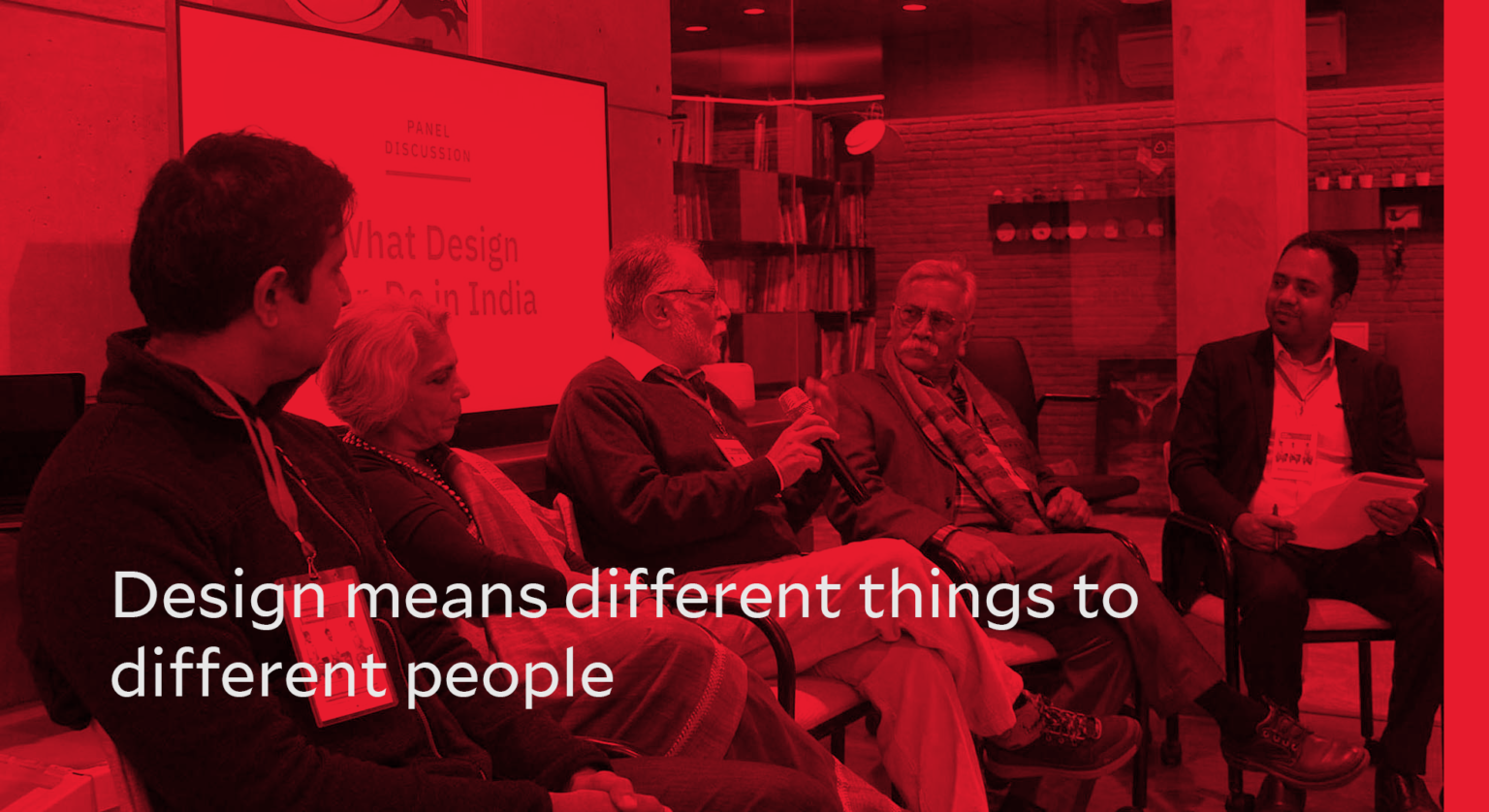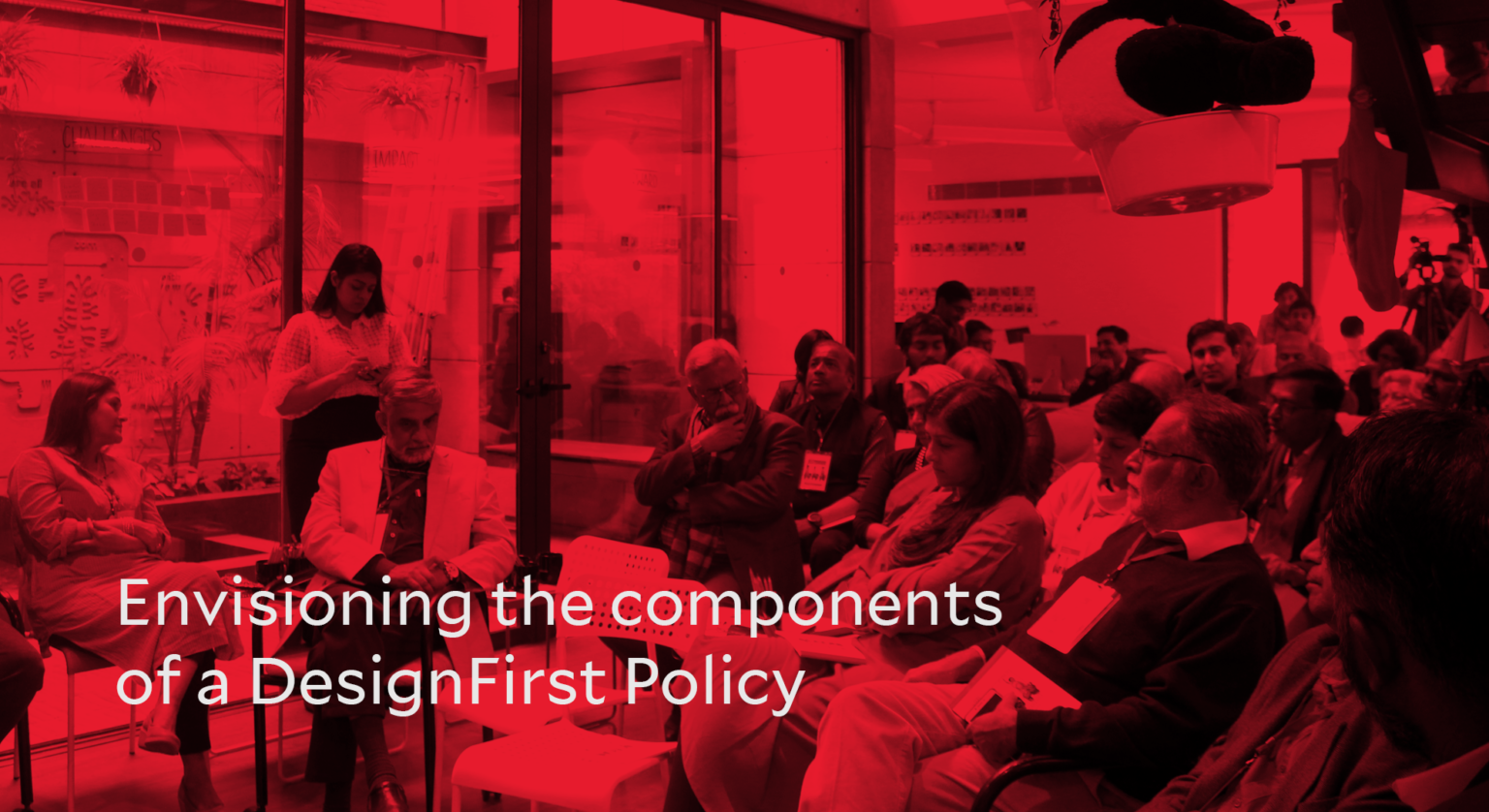Forum Post Mortem
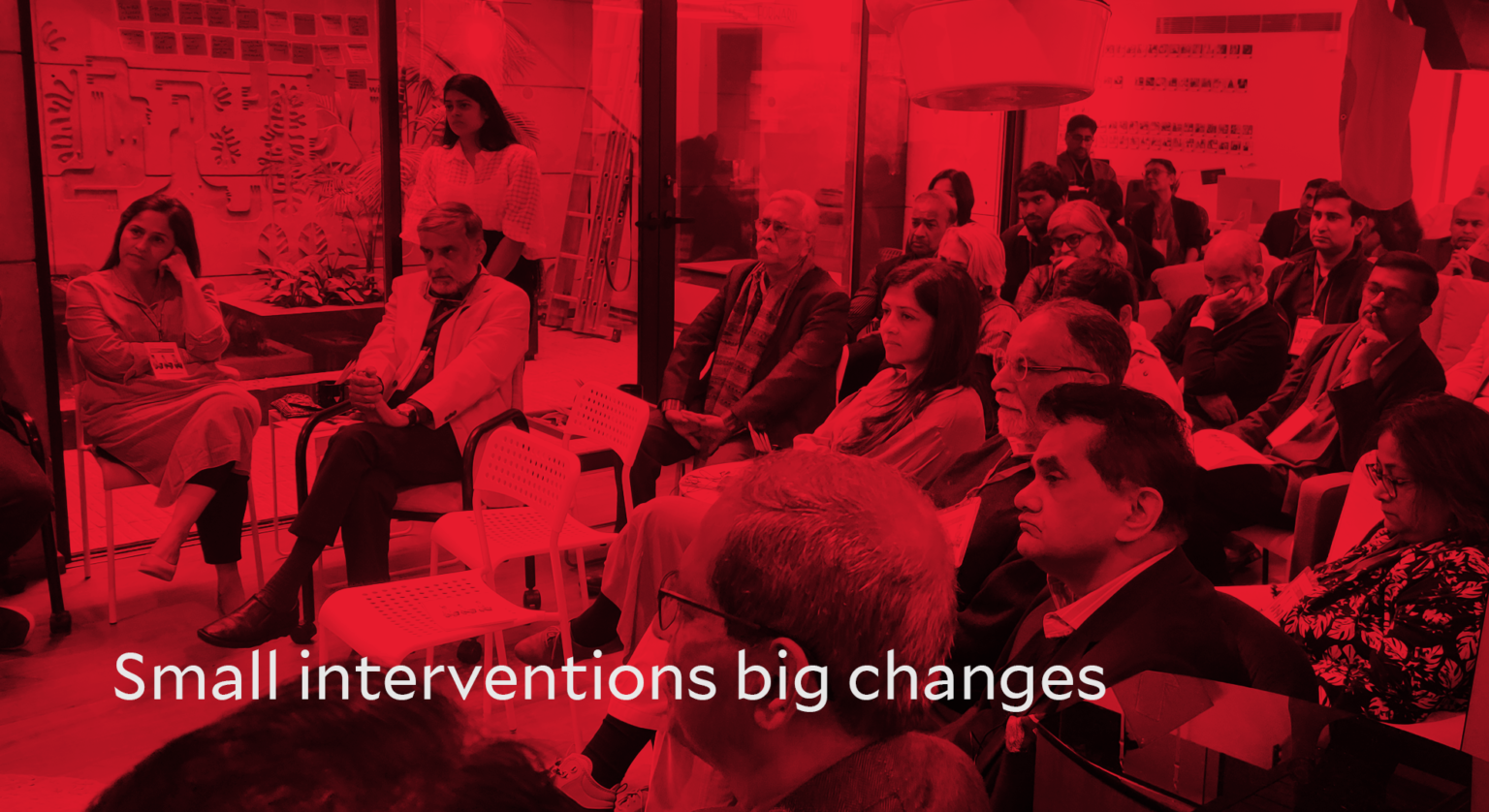
A critique by 4 Forum participants on the Forum with an eye on how the future of India can be shaped through design, the relevance of Design First, and first steps towards its implementation.
We designers fiercely want to own the word design. The need for a design policy is worth debating. Several initiatives in the past to roll out an India Design Policy have not produced results. We need to ask ourselves - why do we need a policy? In other words, why bring regulation when what we want to do is to democratise design? As I had mentioned during the Forum, Uber is a perfect example of a design-led, technological disruption that first got adoption and then waited for regulation to catch up.
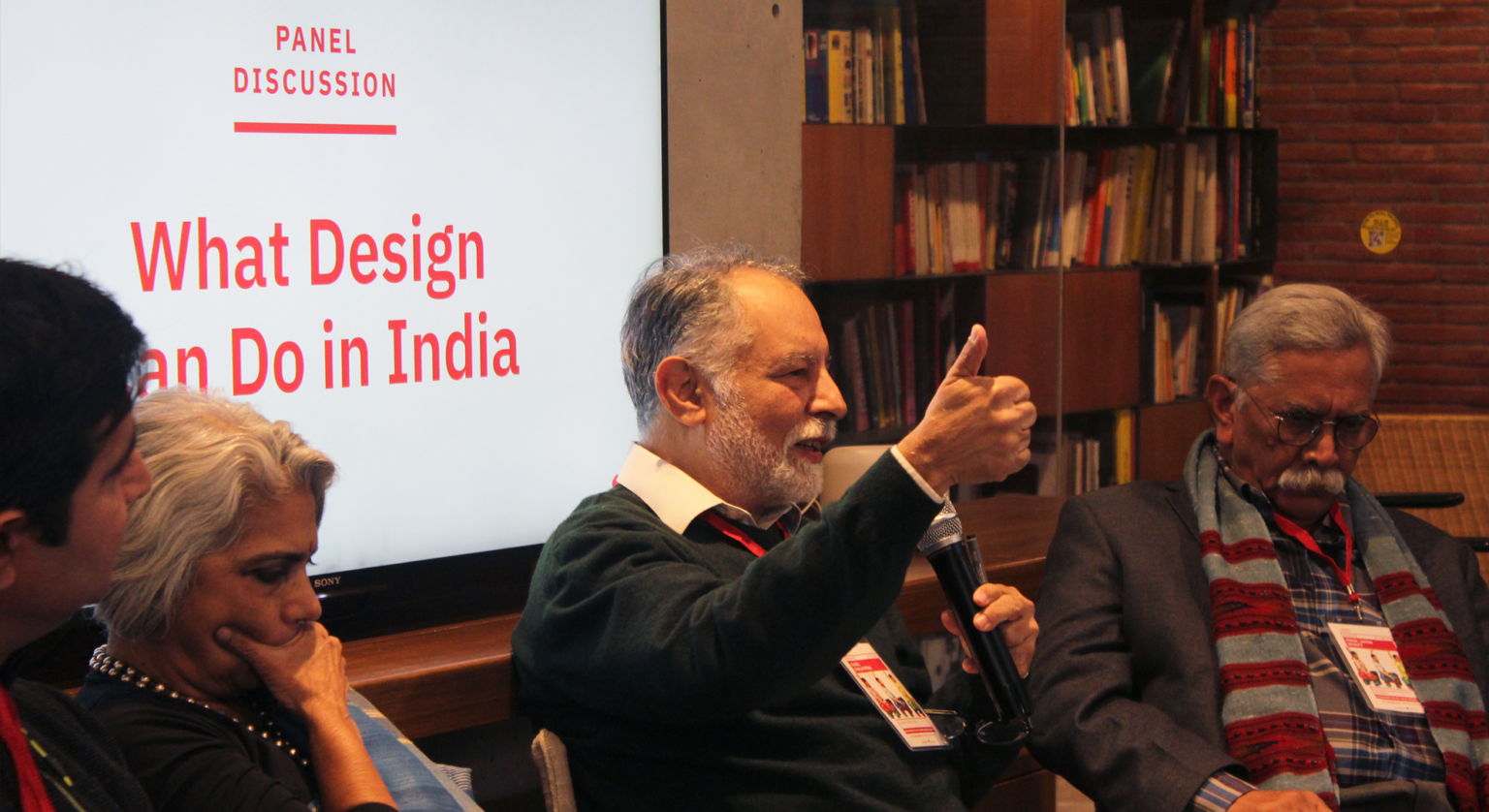
Sunil Malhotra, Ideafarms at the Forum
What is design? Design defies definition: forget other stakeholders, even designers can’t generally agree on what it is or isn’t.
Raymond Loewy famously pronounced that, “Design is too important to be left to designers.” My view has been that designers must let go of “design” and stop seeing it as a property to own, to the exclusion of design’s beneficiaries. The market is the best decider of success as has been proven time and again. The market is the best measure of the value of design.
The Forum was a good start. People need exposure to good design. What we need is a design movement more than a policy. It would be worth launching citizen-led initiatives, where designers participate in solving problems as stakeholders of the community, not just as service providers. We are in the middle of the 4th Industrial Revolution where a new range of technologies is fusing together the physical, digital and biological worlds. This is the big shift designers need to understand and exploit. The answers are all there, just that they are hidden in plain sight.
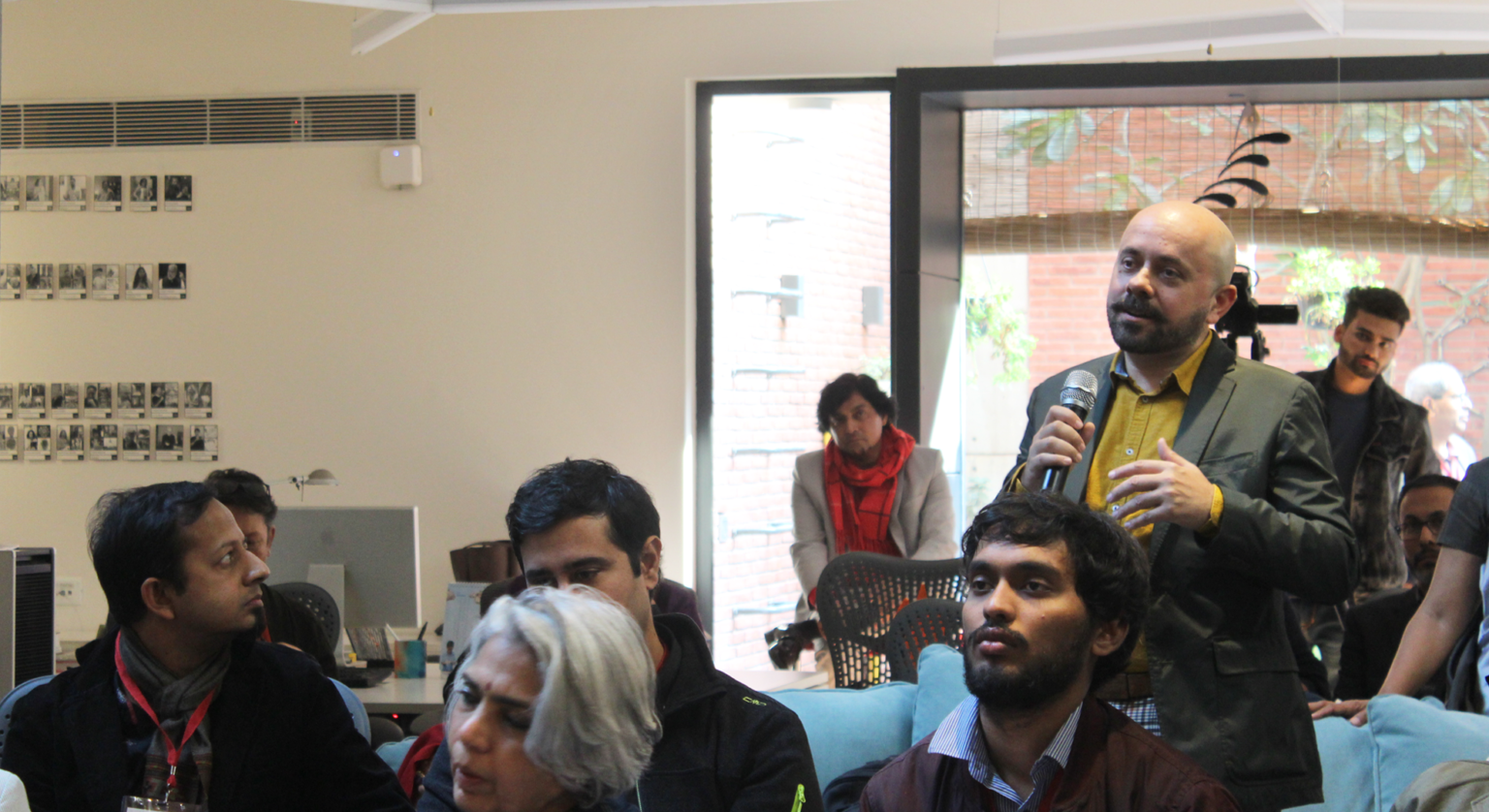
Aditya Dev Sood, Vihara Innovation
This is a conversation that is well overdue. It was a solid meaningful dialogue with a reasonably diverse set of personalities. The community got together with a valuable intent. And the ideas of design got pulled together to achieve these objectives.
The most powerful way to see how design works is to look at how new products and technology influence our lives. As simple as if you have showered this morning. If new hard and soft infrastructure do not arise to make it easy to shower, you will not exhibit this behaviour: and simply messaging about the importance of showering will not show the expected results.
Strategic Collaborations and
Co-creation
Voot and upGrad: With the surge of OTT and Online Education market, Voot is giving a boost to Edutainment by partnering with upGrad. Voot is planning a dedicated section of Data Science, Blockchain, Tech and Management content via upGrad, to help working professionals enhance their employability quotient.3
At the Forum, we discussed how metrics are an indicator of the impact of design and growth. This leads to value creation. But to establish this, we need to perhaps partner with macroeconomists to make the argument.
While we are looking at substantial Government intervention, delivery will not happen without the active involvement of the community. A smaller group needs to get together and make a concentrated effort to see what other Central Government agencies need to come together - Commerce, Finance and so on - and how to begin the dialogue, which is ideally hosted by relevant organisations. Creating a platform to have these dialogues with civil services would be a valuable step. This would ensure we are able to reach the right Government personnel with our concerns. Further, starting with Indian states that are willing and able, would help to take these initiatives forward.
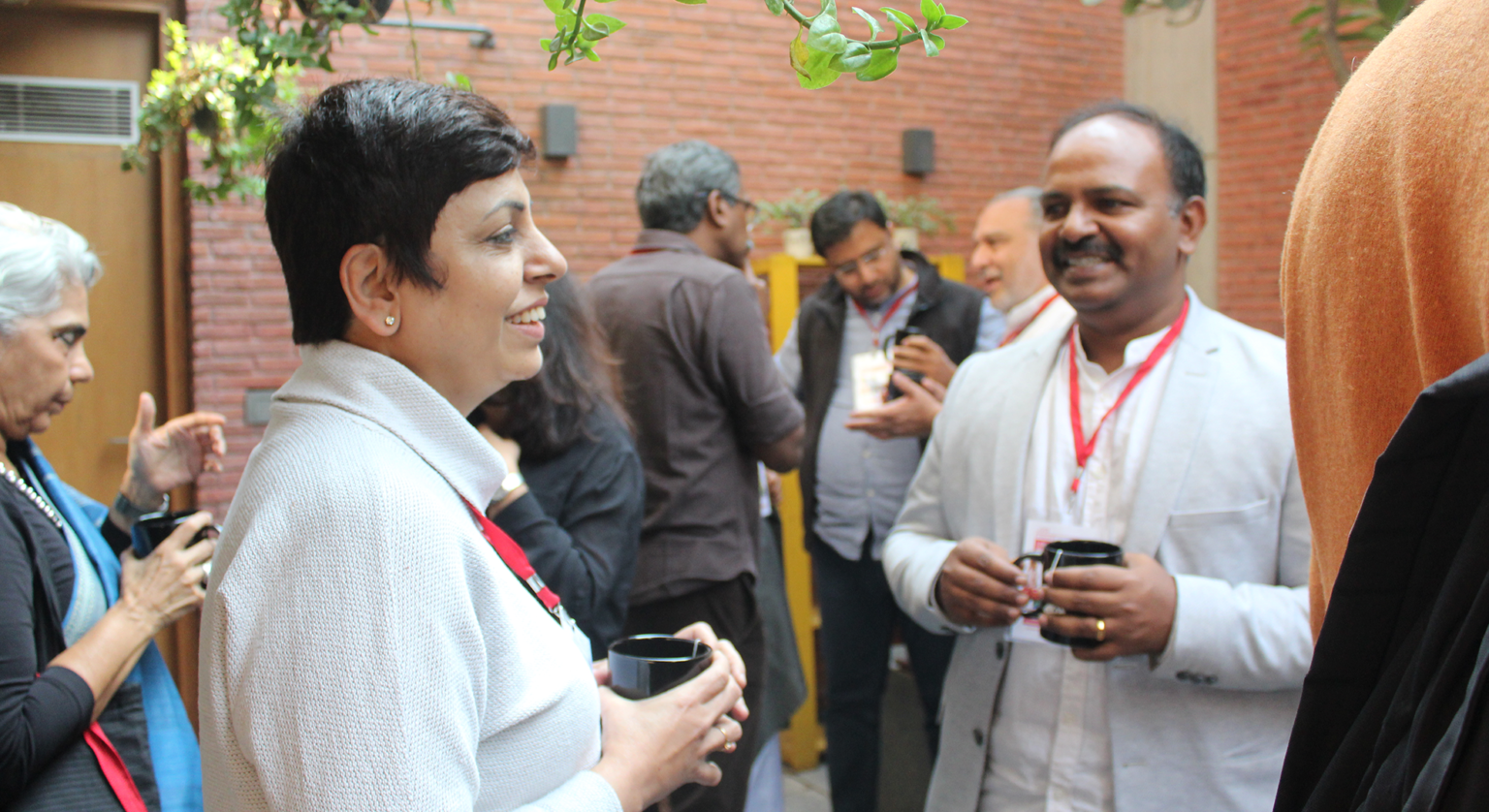
Ashwini Deshpande, Elephant Design with Lourd Nathan, Frog Design
It was amazing to have so much presence and involvement with everyone there. It was a great first start. I felt very positive about Mr.Kant’s engagement with the community, and his openness to listen to varied viewpoints. It seems that the informal nature of the platform encouraged these fresh exchanges.
At times I felt the discussion was not aligned with the Design First agenda, and there was a loss of thread. It would have been stronger if we could have brought the conversation back to the main focus. Nevertheless, what was achieved overall was great.
I think it’s important for the design community at this point to be clear about what we want and to create a tightly-knit agenda with that same focus. NITI Aayog can surely help in facilitating us if we are clear about what we want. We also need to keep personal agendas out of the way and work towards the collective good.
As a practicing design professional, I have always believed that design intervention in Government-led projects could bring large impact. However, most of us have very little experience of actually working with Government bodies. Whenever we have had a chance to interact with bureaucrats who handle public projects like water management, public transport, and sanitation, we have found most of them to be aware of the merits of design thinking. In the current system, many design firms may not respond to tenders as it is. Interventions of design consultants need to be evaluated differently than vendors who are selling material goods or taking up contracts of execution. Today, major MNCs have a Marketing Purchase team that assesses communication, PR, events, design & digital agencies that provide professional services. These teams are trained and groomed for conducive and productive interactions with agencies. If the Government could have a similar outlook for the evaluation of design interventions, that would be a great step forward. If design professionals can take on Government-led projects, we should be able to see a lot of value addition and positive social impact in many spheres.
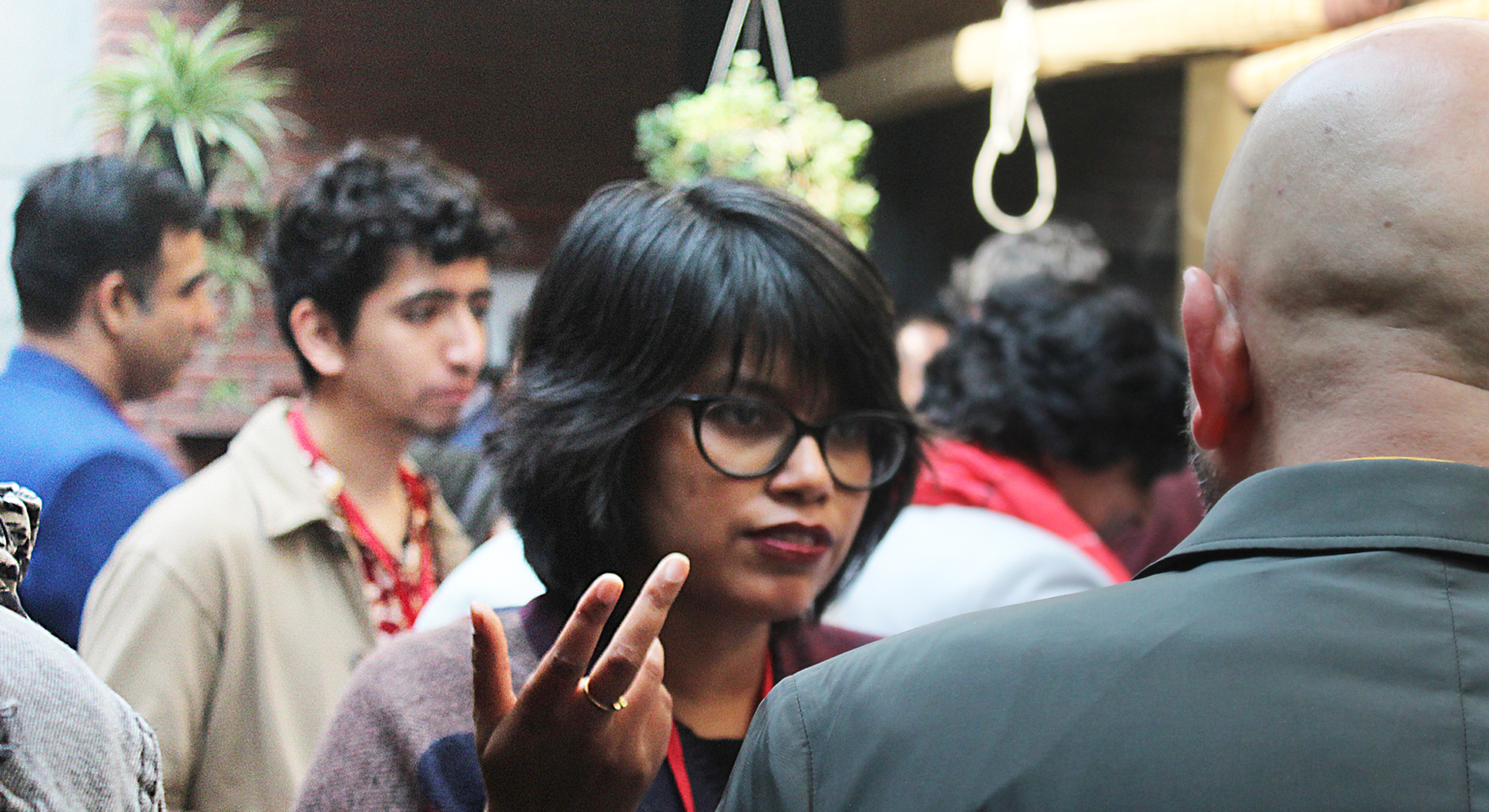
Arundhati Mitter, Flow, in conversation with Aditya Dev Sood, Vihara Innovation
It was great to hear Mr.Amitabh Kant at the Forum speaking to a niche gathering at the studio. Overall, this was a great first step. I did feel that the discussions around the main topics were disparate and lacked focus, but it is also to be expected as the way design is practiced as a craft and across industries, is very diverse. As Mr.Kant said at the end, we need to define very clearly, where it is that we want support.
I can immediately think of three areas where I feel the amplification of the design message is needed. A platform like this is great to push forward a multi-pronged DesignFirst Mission to one - set up DesignFirst Labs across the country focusing on the development of the design mindset that serves as a catalyst to innovation and skills of the future. These will largely address the youth and professionals. The Labs can also facilitate opportunities for deep research within practice. Two - take design down into the school environment where design is viewed as a verb, focusing on a rigorous skill and disposition development process between grades 3 – 8. This will then organically feed into the work of the Atal Tinkering Labs. Three - amplify the DesignFirst message particularly with C-suite across industry verticals who view design as either a non-core business function or a cosmetic function.
Written by Anthony Lopez
We can add significant value to your
long-term business goals.
Get in touch with us or meet us at our studio in Gurgaon.
Insights
Follow Us
© 2025 Lopez Design Pvt. Ltd. All rights reserved


